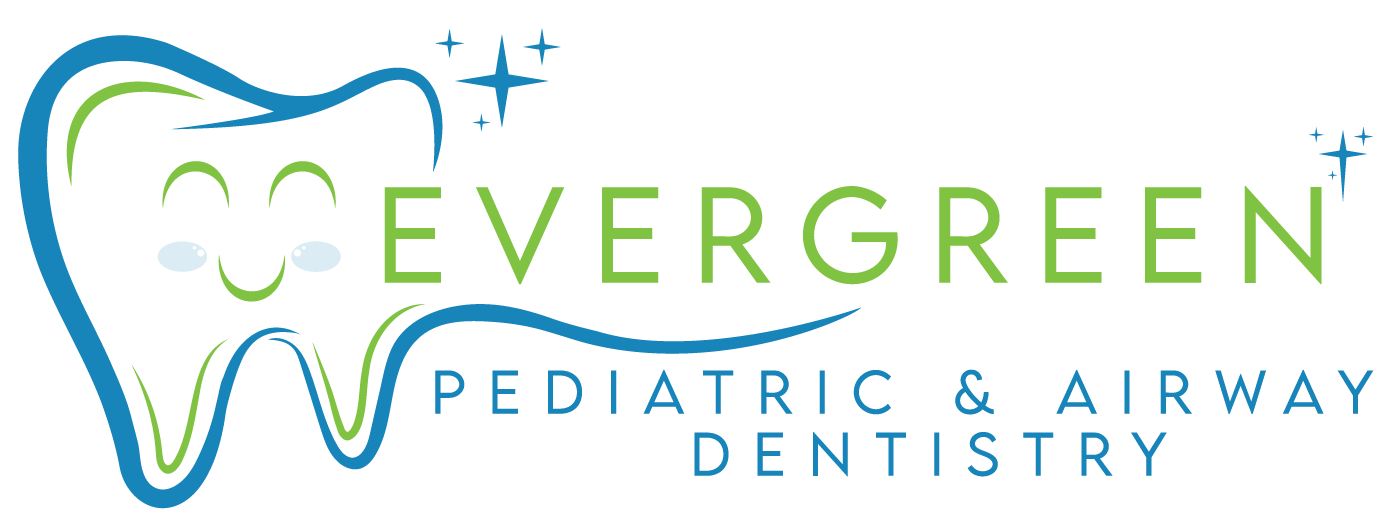Sleep Dentistry vs. Traditional Dentistry: Choosing the Right Approach for Your Child
Choosing the right dental care for your child can be a maze of decisions, each one impacting their comfort, health, and even their perception of dental visits for years to come. Among these choices, the decision between sleep dentistry vs traditional dentistry stands out as particularly significant. Sleep dentistry, often known as sedation dentistry, offers an alternative for children who experience dental anxiety or require extensive dental procedures, providing a stress-free experience. Traditional dentistry, on the other hand, relies on non-sedative techniques to keep children cooperative and comfortable during their visits. This blog explores the nuances between sleep dentistry and traditional dentistry, aiming to arm you with the knowledge needed to make the best choice for your child’s dental health and wellbeing.
Dental Care for Children
Ensuring kids adopt healthy dental habits isn’t solely about dodging tooth decay; it’s about laying the groundwork for enduring dental well-being. The dental health journey should start with their very first tooth, emphasizing the importance of routine dental check-ups for monitoring the growth and health of their teeth and gums. The notion of visiting a dentist might evoke fear in some youngsters, but fostering a positive dental experience early on can greatly alleviate anxiety associated with dentist visits later on. In managing a child’s discomfort and apprehension during dental treatments, both sleep dentistry and traditional methods have their merits, offering varied ways to enhance the child’s comfort and cooperation. Deciding whether to opt for sleep dentistry or stick with conventional methods often hinges on the individual needs of the child, the dental procedure’s complexity, and recommendations from a reliable pediatric dentist.

Sleep Dentistry vs. Traditional Dentistry
Parents Considering Dental Options for Their Child
When exploring dental care options for your child, you might encounter the terms “sleep dentistry” and “traditional dentistry.” Here’s what you need to know to make an informed decision.
- Sleep Dentistry: This modern approach is designed to ensure a stress-free experience for your child. Depending on the level of treatment needed or your child’s anxiety levels, sleep dentistry can range from mild sedatives—which keep your child awake but in a state of relaxation—to general anesthesia, where your child will be completely asleep. The choice of sedation is carefully selected based on what’s best for your child and the procedure they’re undergoing.
- Traditional Dentistry: This method focuses on creating a welcoming and calming atmosphere for young patients. Techniques like distraction, positive reinforcement, and slowly getting your child used to the idea of dental visits aim to keep them cooperative and calm without the need for sedatives. Traditional dentistry is particularly suitable for regular check-ups and less complex procedures. It also plays a crucial role in helping children build a positive relationship with dental care from an early age.
Both sleep and traditional dentistry aim to reduce any potential discomfort or anxiety. The right option for your child will depend on their individual needs, the complexity of the dental work required, and how they respond to dental environments. For extensive dental procedures or if your child experiences significant anxiety at the dentist, sleep dentistry could offer a comfortable solution. Meanwhile, traditional dentistry might be ideal for routine care, helping your child grow accustomed to and even enjoy their dental visits.
Evaluating Dental Procedures for Children
When it comes time to choose between sleep dentistry and conventional approaches for a child’s dental care, getting to grips with the nuances of each can help guide the best decision. Sleep dentistry involves conducting an in-depth review of the child’s health history and discussing the most fitting sedation level. This can range from light sedatives, which allow the child to stay conscious but relaxed, to full sedation or anesthesia, making the child completely unaware during the dental work. These methods necessitate a sedation-trained professional’s presence, enhancing safety and expertise.
Conversely, conventional dental methods focus on psychological strategies to keep the child calm and cooperative during their appointment. Employing tactics like “tell-show-do” (which means explaining, showing, then doing the procedure), using distractions, and comforting words are typical practices. The dentist’s ability to foster a welcoming and empathetic atmosphere is essential, alongside the child’s capacity to handle new situations without sedation.
Both strategies strive for the same objective—ensuring a positive dental experience and sustaining or bettering the child’s dental health. However, they differ markedly in their approaches and implementations. Deciding between them takes into account several considerations, such as the child’s specific dental requirements, their level of anxiety, and their previous dental experiences.
Sleep Dentistry vs. Traditional Dentistry for Your Child: Pros and Cons
When contemplating whether sleep dentistry or traditional dentistry is the right path for your child’s dental care, weighing the pros and cons of each approach can be instrumental.
Sleep Dentistry Pros:
- Reduced Anxiety: Ideal for children who experience significant fear or anxiety during dental visits, as it can create a stress-free experience.
- Complex Procedures: Makes lengthy or complex dental procedures more manageable for the child by allowing them to be sedated or asleep.
- Efficiency: Can enable the dentist to work more quickly and effectively, as the child is less likely to move or be uncooperative.
Sleep Dentistry Cons:
- Risk of Sedation: Any form of sedation carries inherent risks, though they are minimal when administered by experienced professionals.
- Cost: Typically more expensive than traditional dentistry because of the additional resources and expertise required for sedation.
- Recovery Time: Post-procedure, there may be a recovery period for your child as the sedation wears off.
Traditional Dentistry Pros:
- Building Trust: Helps in building a relationship and trust between the dentist and the child, which can be beneficial for lifelong dental health.
- Cost-Effective: Generally, less expensive than sleep dentistry as it does not require sedatives or additional sedation-trained professionals.
- Immediate Recovery: Allows the child to resume normal activities immediately after the dental visit without downtime from anesthesia.
Traditional Dentistry Cons:
- Anxiety and Fear: May not be suitable for children with high levels of dental anxiety, potentially making dental visits traumatic.
- Limitations: May not be feasible for extensive dental procedures that require the child to be still for long periods.
- Variable Cooperation: Success depends heavily on the child’s level of comfort and willingness to cooperate during the visit.
Making an informed decision between sleep dentistry and traditional dentistry involves a comprehensive understanding of a child’s dental needs, level of dental anxiety, and overall health. Parents should engage in open dialogue with a pediatric dentist to weigh the pros and cons of each method, considering not only the immediate dental procedure but also the long-term implications for the child’s dental health and attitude towards dental care. It may also be beneficial to consider the child’s feedback and comfort level with the dentist and the dental environment. Ultimately, the choice should be guided by what will best ensure the child’s comfort, safety, and positive experience, setting a strong foundation for lifelong oral health habits.

Children Dental Care Service
FAQs about Sleep Dentistry and Traditional Dentistry
- At what age is it appropriate to consider sleep dentistry for a child? Sleep dentistry is considered on a case-by-case basis, focusing on the child’s specific needs rather than age. However, it’s commonly explored for children who cannot tolerate traditional dental procedures due to severe anxiety, special needs, or the nature of the dental work required. Consulting with a pediatric dentist is crucial for assessing the best approach for your child.
- Can sleep dentistry be dangerous for children? Like any procedure involving sedation, there are inherent risks. However, with a trained professional adept in pediatric sedation, the risks are minimized. A comprehensive evaluation of the child’s health and meticulous monitoring during the procedure further ensure safety.
- How can I help my child develop a positive attitude towards dental care? Early and regular dental visits are key, along with framing these visits as positive experiences. Utilize child-friendly language about dental health and practice consistent oral hygiene habits at home. For children prone to anxiety, discussing what to expect and involving them in the process can help alleviate fears.
Analyzing the Comfort Factor
When considering the comfort factor, both sleep and traditional dentistry employ distinct strategies to prioritize patient well-being, especially for younger patients. Sleep dentistry fundamentally addresses patient comfort by using sedation techniques to alleviate fear and ensure the child remains calm and unaware during dental procedures. This approach is particularly beneficial for patients who experience extreme dental anxiety or require complex treatments, ensuring a stress-free experience without the immediate memory of the procedure.
On the other hand, traditional dentistry focuses on creating a safe and reassuring environment, employing techniques to gently accustom children to the dental process. Strategies like the “tell-show-do” method, positive reinforcement, and engaging distractions such as toys or stories are designed to reduce anxiety and build trust between the dentist and the child. The goal is to make dental visits a less intimidating experience, encouraging children to view dental care positively.
Both methodologies highlight the importance of comfort, tailoring their approaches to the unique needs and sensitivities of child patients. Whether through the direct intervention of sedation or the nuanced, psychological comfort provided by traditional methods, prioritizing the emotional and physical comfort of young patients is essential in fostering a lifelong commitment to dental health.
Considering Cost Differences
When comparing children sleep dentistry to traditional methods, one of the most significant factors for parents to consider is cost. Sleep dentistry, due to its requirement for sedation and the specialized skills needed from professionals to administer and monitor the sedation, tends to be more expensive. This increased cost can be attributed to the additional resources, equipment, and insurance required to safely conduct procedures under sedation. Parents opting for sleep dentistry should anticipate higher fees for the dental work, in addition to potential charges for the use of sedation services.
Insurance coverage plays a pivotal role in the financial planning process for dental care. Coverage for sleep dentistry can significantly vary depending on the insurance provider and the specific policy terms. Some insurers may view sleep dentistry as a necessity for certain cases, such as patients with extreme anxiety or those undergoing extensive dental procedures, potentially offering partial or full coverage for sedation services. However, this is not universally applicable, and some policies may categorize sedation dentistry as an elective procedure, limiting coverage or excluding it altogether.
For parents navigating the cost implications of choosing between sleep and traditional dentistry, it’s crucial to consult with their insurance provider to understand the specifics of their coverage. Additionally, discussing payment plans or financial assistance options with the dental office can offer some relief from the immediate financial burden. Preparing for these expenses involves assessing the benefits of each dental method against the potential costs, ensuring the chosen approach aligns with the child’s needs while remaining financially viable for the family. Engaging in thorough research and open communication with both the dentist and insurance provider will aid parents in making an informed decision that considers both the child’s comfort and the family’s economic circumstances.

Kids Dental Examination
Making an Informed Decision
When choosing between sleep dentistry clinic for your child, several factors merit careful consideration. First and foremost, evaluate your child’s level of dental anxiety and their ability to undergo dental procedures while awake. Children who have special needs or exhibit extreme fear may benefit more from sleep dentistry, ensuring a trauma-free experience. Consider the nature and complexity of the dental work needed. For extensive treatments, sleep dentistry might offer a smoother, more comfortable process for your child.
Discussing options with your dental care provider is crucial in making an informed decision. Start by openly expressing any concerns or questions you have regarding both sleep and traditional dentistry. Ask for detailed explanations about the procedures, risks, and benefits associated with each option. It’s also important to inquire about the dentist’s experience and qualifications, particularly in administering sedation for sleep dentistry. Understanding the follow-up care and how each option might impact your child’s perception of dental health in the long term can also guide your decision.
Gathering information on the cost implications, including insurance coverage, will provide a clear picture of the financial aspect of each option. Finally, consider seeking a second opinion if you have lingering doubts. Making an informed choice involves balancing the emotional comfort and safety of your child with practical considerations, ensuring their dental visits are positive experiences that promote a lifetime of good oral health habits.
Choosing between sleep dentistry and traditional dentistry for your child involves careful consideration of their individual needs, temperament, and the nature of the required dental procedures. Both approaches offer unique benefits, from managing severe anxiety with sedation to fostering resilience and coping strategies without it. Engaging in open discussions with your pediatric dentist, considering your child’s past dental experiences and their current levels of anxiety, and reflecting on the long-term impact of these choices on your child’s perception of dental care are all pivotal steps in making an informed decision. Ultimately, the chosen path should prioritize the child’s overall comfort, safety, and well-being, ensuring a positive foundation for their future dental health. Remember, a collaborative approach involving parents, the child, and the dental care team is key to navigating these decisions and fostering a lifetime of healthy smiles.
Evergreen Pediatric Dentistry
https://www.google.com/maps?cid=14720788683151219551
12910 Totem Lake Blvd NE #103, Kirkland, WA 98034, United States
(425) 814-3196
https://evergreenkidsdentist.com/


